When I was first licensed in the early 60's, I had to scrounge or build everything. Don't think I'm loaded with money. Like most Americans living expenses eat up most of my money. I'm still a master scrounger. I've yet to buy a brand new tower, and my very first brand new radio was purchased in 1998!
My first good antennas were at my first house in Sylvania, Ohio. I had a 1/4 wave insulated base tower for 160 meters and some Beverage and loop antennas for receiving. I basically stayed at that antenna level until moving to the farm here near Barnesville, GA.
When I moved to Barnesville in December 1998, I hastily erected a 190-foot Rohn 25 tower as a quick way to get on the air. I was pretty happy with that tower until I failed to work Spratly Island on 160 meters, even though I was hearing them very well. That prompted me to install a transmitting four-square antenna for 160 meters.
In early January 1999, Bill Fisher (W4AN) approached me about using my station for a contest. I wasn't a serious contester, but I agreed to let Bill and John K4BAI operate from here. Little did I know we would wind up competing in a "shootout" with two New England stations. The path from here to saltwater in the direction of Europe is several hundred miles. At that time no one thought an inland station could ever compete with the East Coast for DX....especially on the most difficult band....160 meters.
You can read about that event in an article by W2GD. We were all very proud of our finish. With no advanced preparation at all and very little experience in 160 contests (160 contests require unique operating techniques), W4AN and K4BAI did a remarkable job.
Bill Fisher W4AN operated from here several times after that event, pushing the scores higher year-after-year. Bill set several record scores and had several first place finishes. The East Coast no longer held a monopoly on 160 contests, or 160-meter DX.
In 1999, I added a 318-foot tower and a rotating 160-foot tall Rohn 55G. I also kept refining my receiving antennas, experimenting and improving the technology of weak signal reception. I started using true stereo diversity receiving around 2000. Stereo diversity turned out to be a significant weak signal DX aide. Since 1998 I worked over 300 countries and all 40 zones from this location on 160 meters. 160 meters was the very first band I even heard a Ham talking on. It has always been the centerpiece of my love for amateur radio. I was quite content to have 160 meters as the main focus of my station.
Interests Change
I was always mostly a low-band operator. I think this is because my first equipment was homebrew and I just could not get things to work well on 15-meters. I developed very little personal interest in bands other than 160, 40, and 80 meters. Around 2003, Bill Fisher (W4AN) started talking with me about a joint contest effort for all bands, not just 160 meters. Unfortunately Bill passed away April 4th, 2004, so our plans never came to fruition. Bill willed me his antennas. I always hoped to finish the station Bill and I planned.
Everything pretty much stayed in limbo until WW4LL approached me. Fred wanted to have one last hurrah before getting too old, and I had the resources necessary for a joint project. We started making major changes in the antennas in 2007.
New 160 Omni Tower
The new 220-foot Rohn 45G tower in the center foreground is the new main omni-directional 160-meter antenna. It will soon be populated with stacked Yagi's (nine Yagi antennas total) pointed towards Europe for 20 through 10 meters. This tower supports ropes that hold 80 meter antennas, and very long ropes that support four 1/4 wave tall vertical elements for a 160-meter four square. This tower is series-fed (insulated base) against a ground system of about one-hundred 200-ft or longer radials. The radials are shallow buried 16-gauge bare solid copper wire known as "buss wire". A small low-pass L-network using a vacuum capacitor and variable inductor matches the tower. An 80-foot transmission line coiled around an insulated form between the L-network and DXE-RR8-HD antenna relay detunes this tower when the four-square is used. An eight-direction four-square, supported from rope catenaries, is detuned when the omni-tower is used. There is a 2nd harmonic filter located at the antenna.
Four-square elements:
Four 1/4 wavelength tall elements for my eight direction 160-meter 4-square hang from catenary ropes as shown in this photo.Wire is 9 gauge aluminum wire. This saves weight. Connections are made with stainless steel clamps.
Each element is about 130-feet tall and spaced 1/4 wave apart at the corners of a square. Each element has about 50 radials, each radial 1/4 wave long. These radials are bonded into other radials they cross. This system forms a traditionally sized four-square 130-feet on a side with a huge ground screen. I use unique phasing and matching to obtain eight selectable primary directions and higher gain than a typical 4-square.
Spotting - Multiplier Antennas
Originally 160 feet tall, this tower was extended in height in 2007. This is a rotating 200-foot tower with Yagis for 40 meters up through 2 meters. The rotating hardware comes from K0XG and has been trouble-free for 10 years. This tower has sixty 140- foot long buried radials for lightning protection and to help with low NVIS antennas like dipoles.
South America / Caribbean / USA Tower
The South America / Caribbean/ USA tower is the short Rohn 25G tower in the background. It is 70 feet tall.
My shortest and lightest tower is a 70-foot Rohn 25G.
This tower supports 4-element monoband Yagis for 20 through 10 meter. The 20 meter antenna is on the top.
The antennas are turned by a Hygain HDR-300 rotor.
Overall Transmitting Antenna Layout
Orange line is my road.
Blue line is a creek that starts from a spring.
Circles with triangles are towers.
Black solid circles are feedline access points.
Thin dotted lines are the main underground cables. Most feedline is 7/8th inch 50-ohm heliax.
Empty circles are verticals.
A=verticals and 40 meter 4-square
B=Rotating 200-foot Rohn 55G tower
C=70-foot Rohn 25G
D=220-foot Rohn 45G insulated base
E=318-foot Rohn 65G
F=300-foot Rohn 55G
Blue line is a creek that starts from a spring.
Circles with triangles are towers.
Black solid circles are feedline access points.
Thin dotted lines are the main underground cables. Most feedline is 7/8th inch 50-ohm heliax.
Empty circles are verticals.
A=verticals and 40 meter 4-square
B=Rotating 200-foot Rohn 55G tower
C=70-foot Rohn 25G
D=220-foot Rohn 45G insulated base
E=318-foot Rohn 65G
F=300-foot Rohn 55G

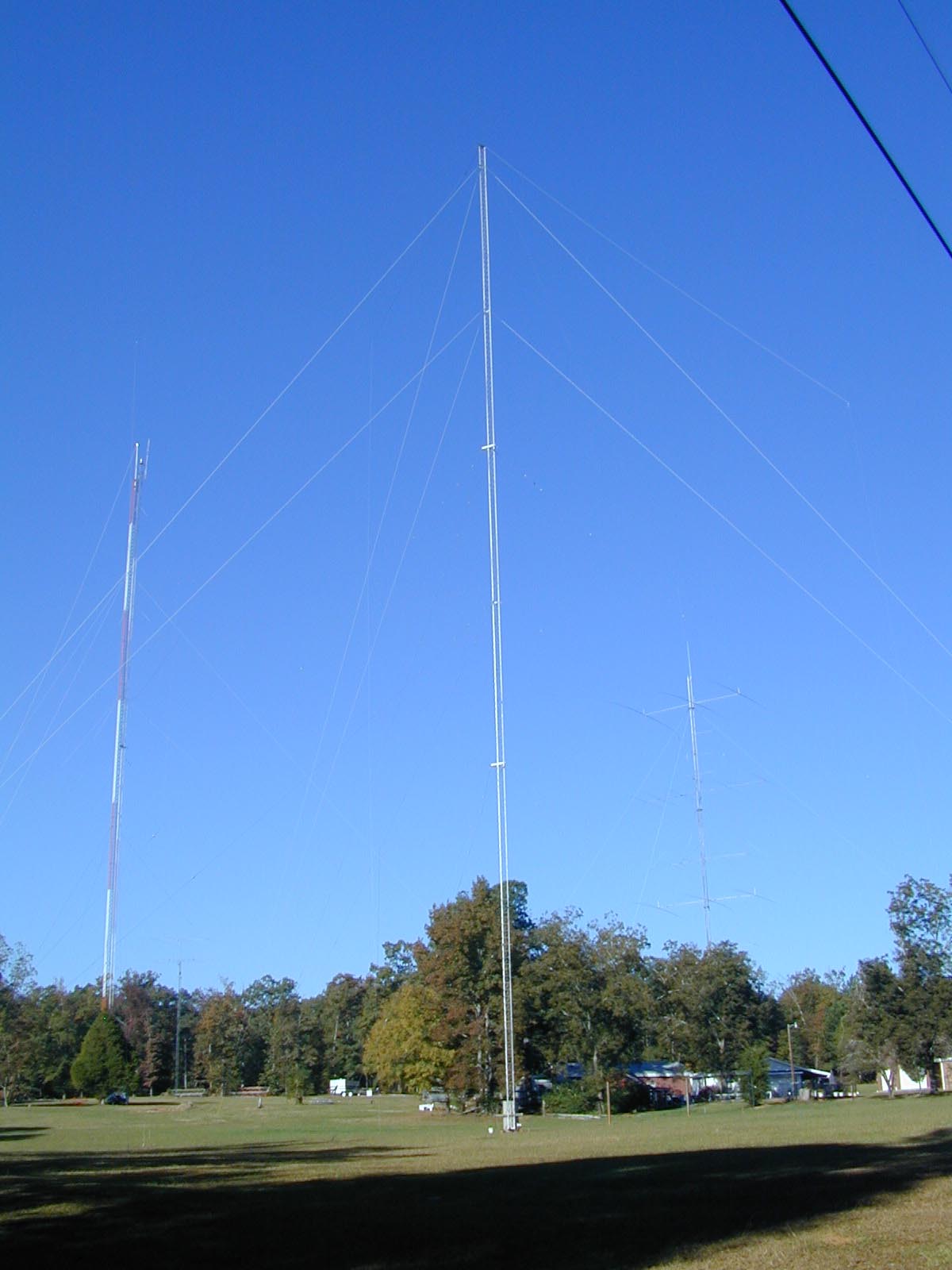
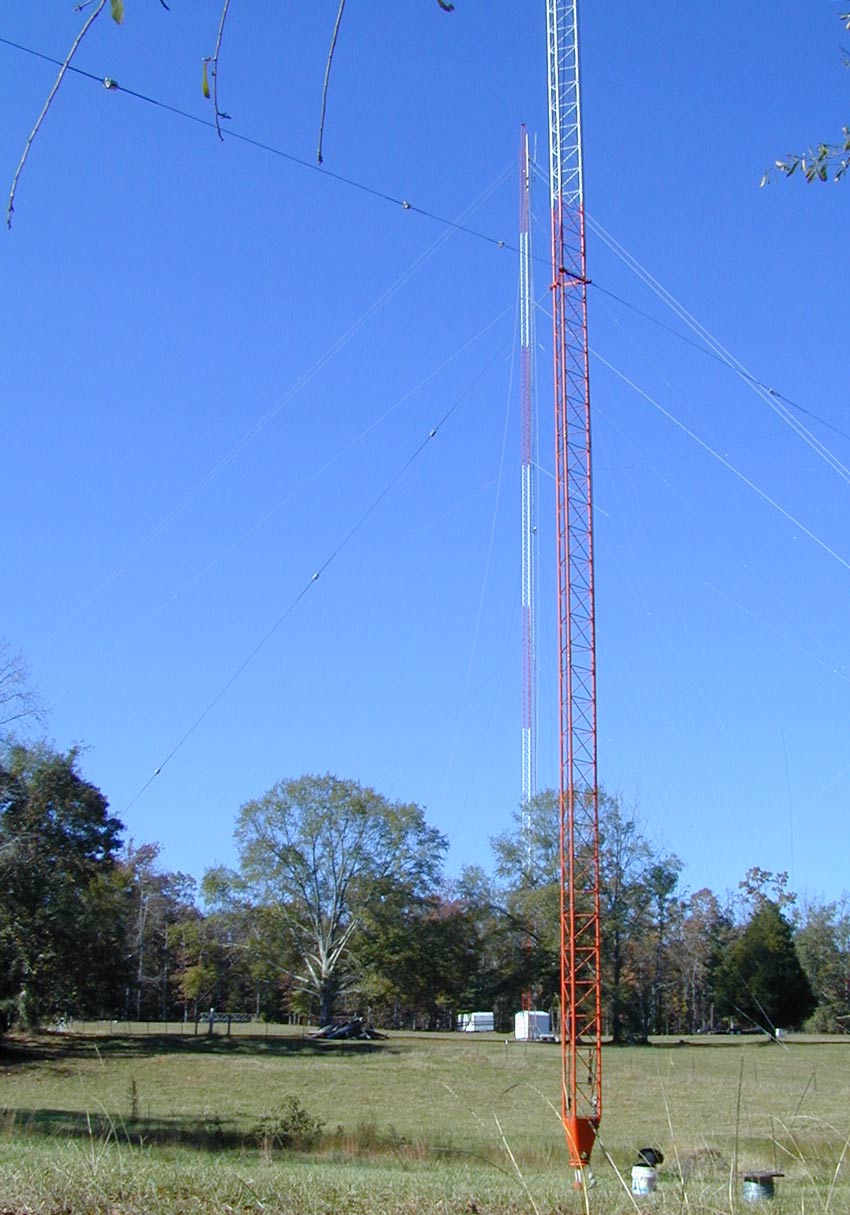
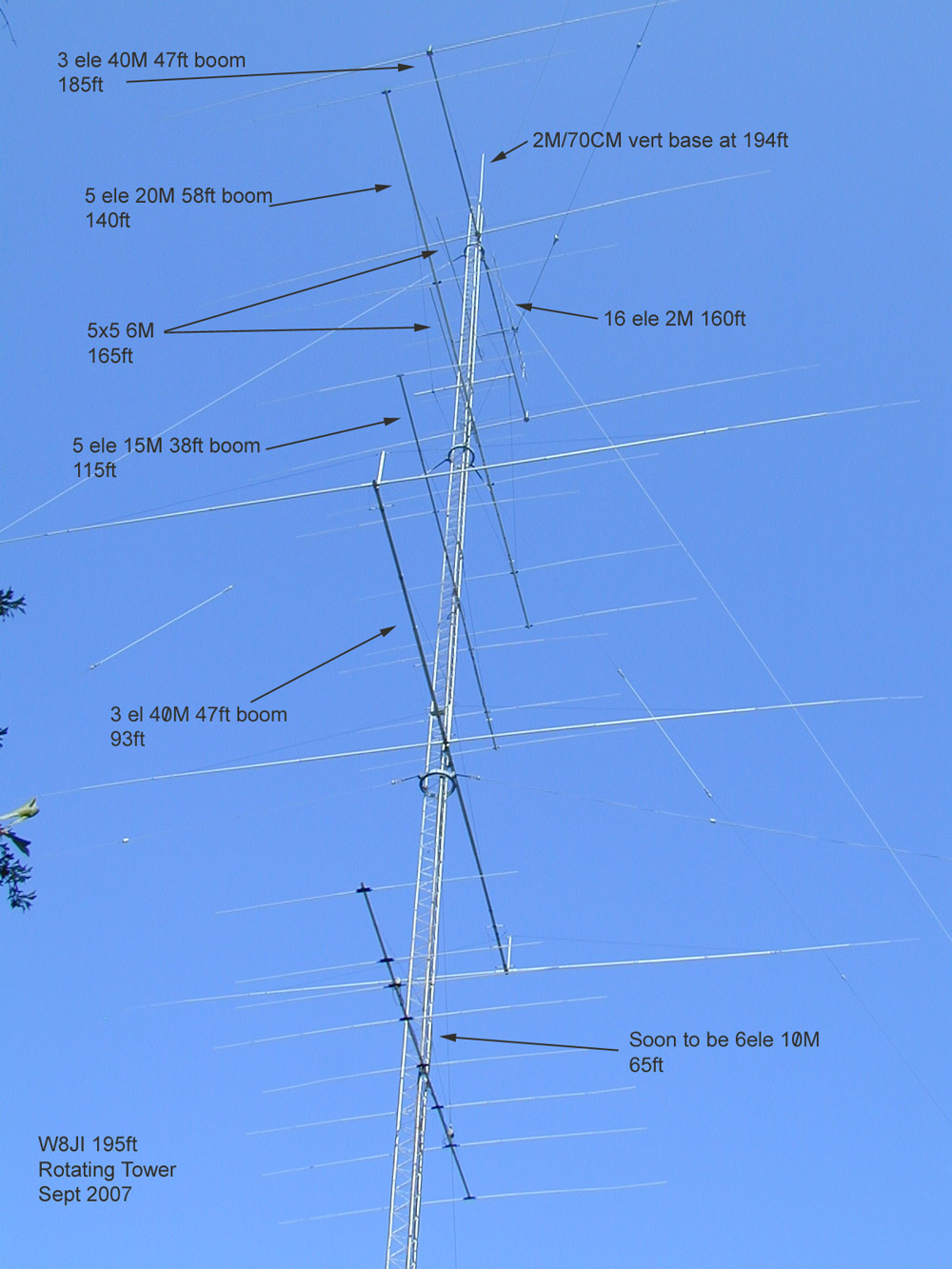
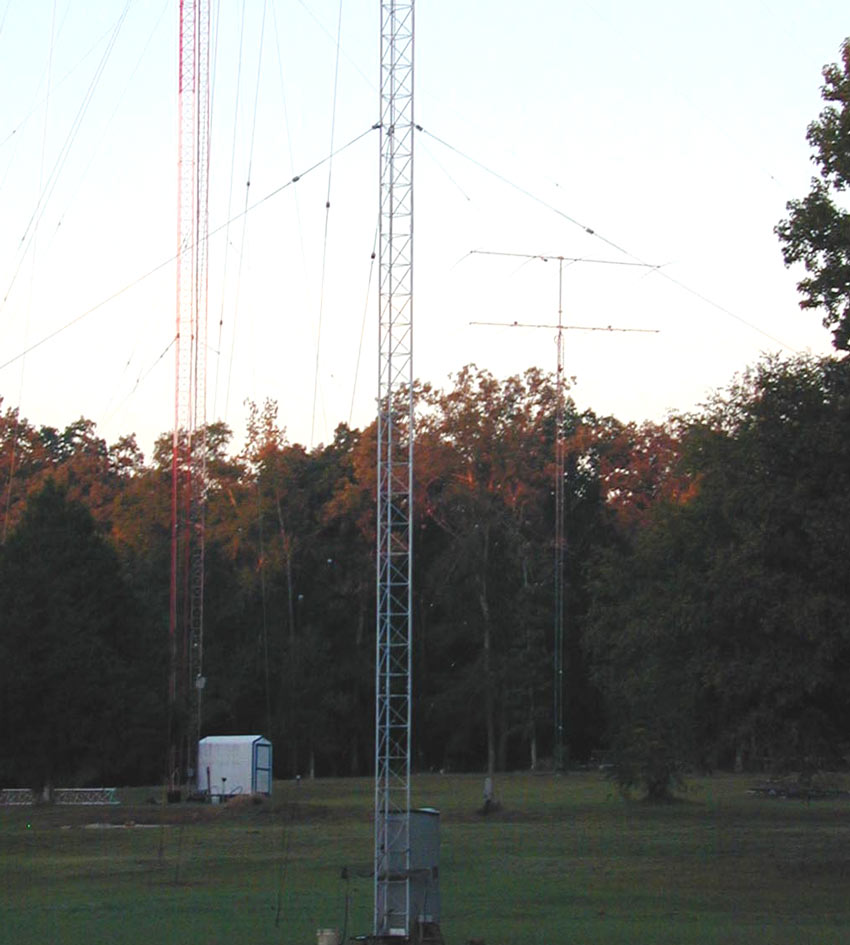
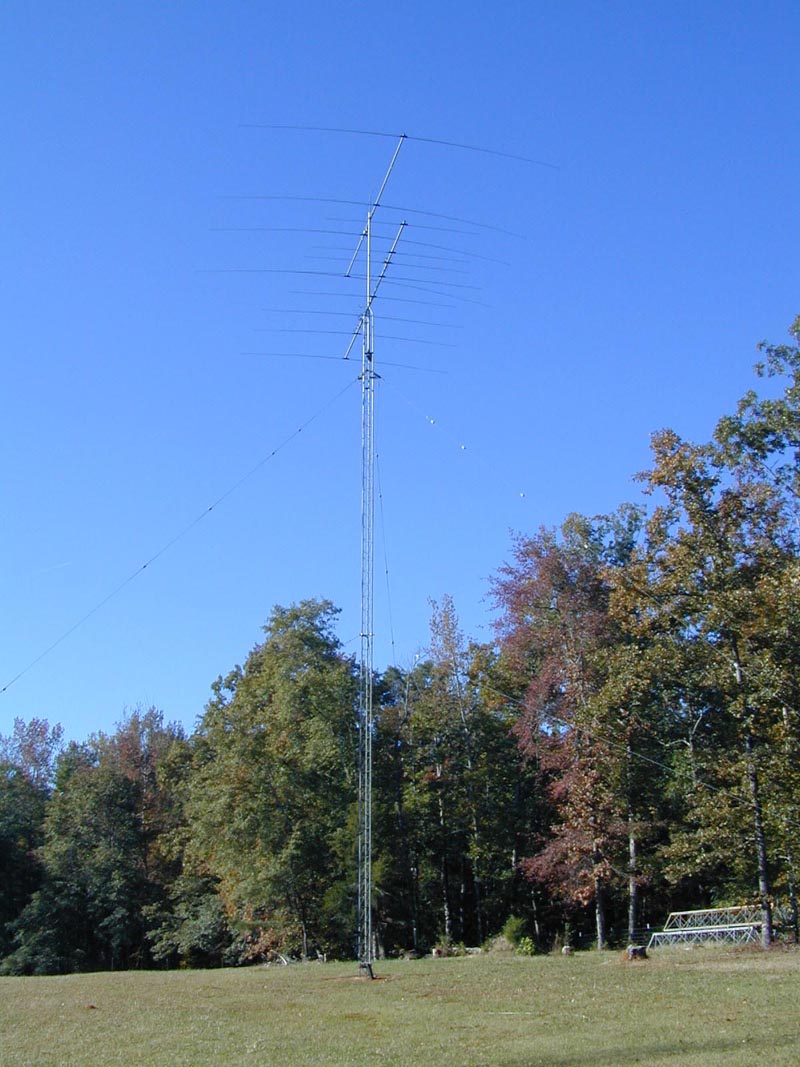
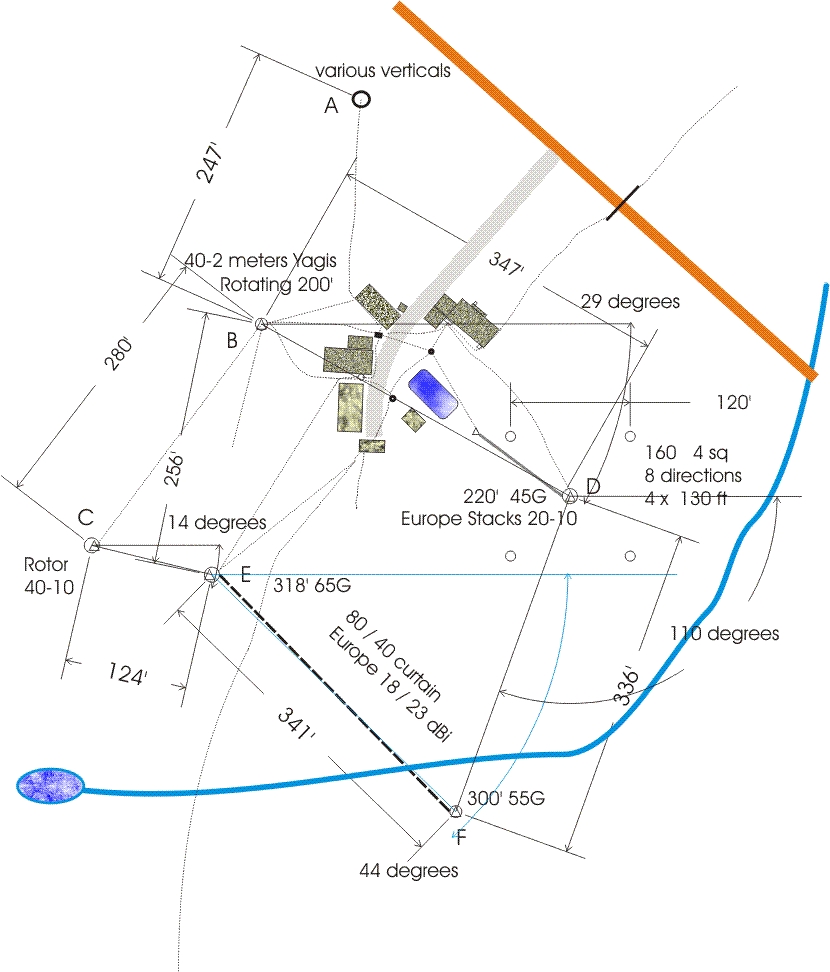
No comments:
Post a Comment